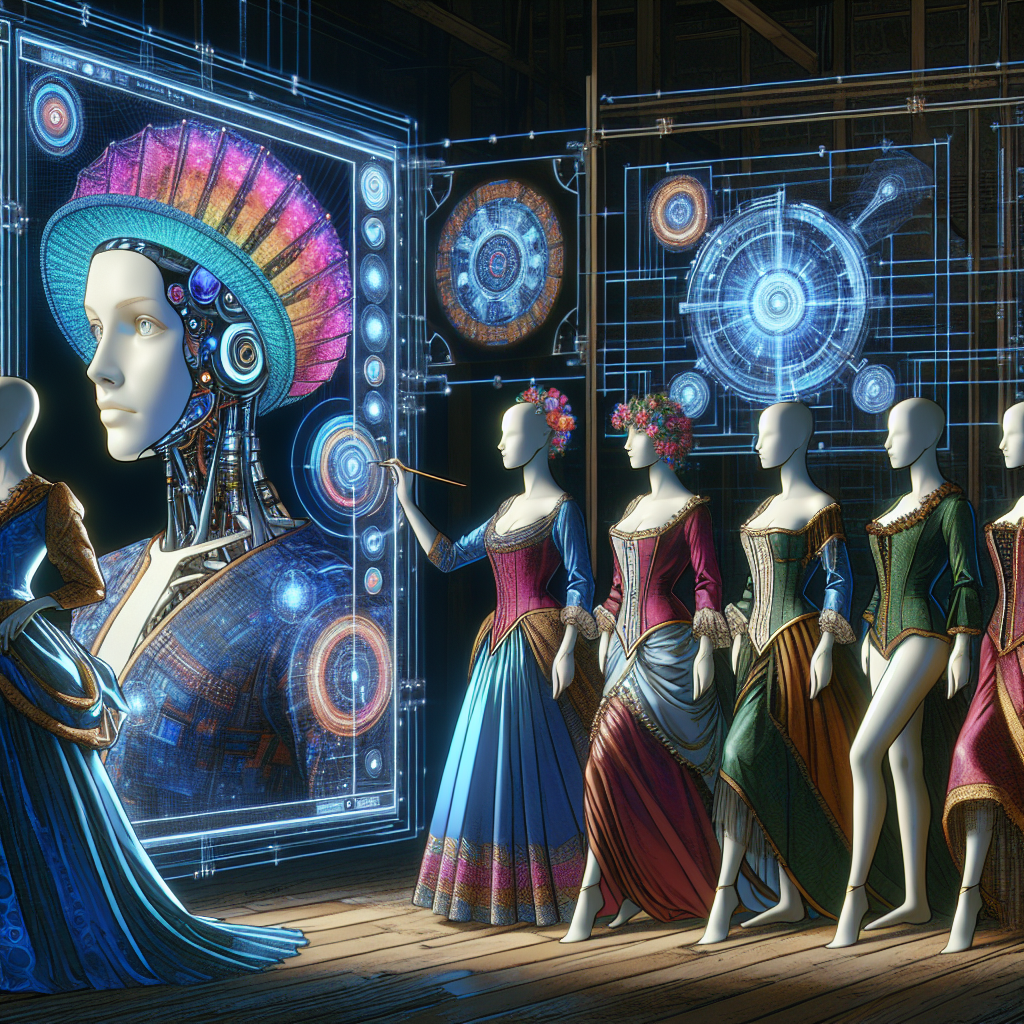The Role of AI in Theater Costume Design: Creating Elaborate and Lifelike Costumes
In the world of theater, costume design plays a crucial role in bringing characters to life and setting the tone for a production. From elaborate period pieces to futuristic sci-fi ensembles, costumes help transport audiences to different worlds and time periods. With the advancement of technology, artificial intelligence (AI) has begun to play a significant role in the creation of theater costumes, allowing designers to push the boundaries of creativity and realism.
AI-powered tools and software have revolutionized the way costume designers approach their craft, offering new possibilities for creating intricate and lifelike costumes. By harnessing the power of AI, designers can streamline the design process, experiment with new materials and techniques, and bring their visions to life in ways that were previously unimaginable.
One of the key ways in which AI is transforming costume design is through the use of virtual fitting rooms. These digital tools allow designers to create virtual models of their costumes and see how they would look on actors before they are actually made. This not only saves time and resources but also allows designers to experiment with different styles and concepts without the need for physical prototypes.
Additionally, AI can be used to analyze historical costume data and trends, helping designers create authentic period costumes that are true to the time period in which a production is set. By studying patterns, fabrics, and styles from different eras, AI can assist designers in accurately recreating historical costumes with a level of detail and accuracy that would be impossible to achieve manually.
Furthermore, AI can be used to generate new ideas and concepts for costume design. By analyzing a vast database of images, textures, and colors, AI algorithms can suggest unique combinations and designs that designers may not have thought of on their own. This can help push the boundaries of creativity and inspire new and innovative costume designs that captivate audiences and enhance the overall theatrical experience.
Another way in which AI is revolutionizing costume design is through the use of 3D printing technology. By combining AI with 3D printing, designers can create intricate and complex costume pieces that would be difficult or impossible to make using traditional methods. This allows designers to experiment with new shapes, structures, and materials, pushing the boundaries of what is possible in costume design.
Additionally, AI can be used to enhance the overall production process by optimizing workflows and improving efficiency. By automating mundane tasks such as fabric cutting and pattern making, designers can focus more on the creative aspects of costume design and bring their visions to life more quickly and effectively. This can lead to faster production times, reduced costs, and a higher quality end product.
Overall, the role of AI in theater costume design is transforming the way designers approach their craft, offering new possibilities for creativity, realism, and efficiency. By harnessing the power of AI, designers can push the boundaries of traditional costume design and create elaborate and lifelike costumes that captivate audiences and enhance the overall theatrical experience.
FAQs:
1. How does AI help designers create more elaborate and lifelike costumes?
AI-powered tools and software allow designers to experiment with virtual fitting rooms, analyze historical costume data, generate new ideas and concepts, and utilize 3D printing technology to create intricate and complex costume pieces.
2. Can AI help designers create authentic period costumes?
Yes, AI can analyze historical costume data and trends to help designers create authentic period costumes that are true to the time period in which a production is set.
3. How does AI enhance the overall production process?
By automating mundane tasks such as fabric cutting and pattern making, AI can optimize workflows and improve efficiency, allowing designers to focus more on the creative aspects of costume design and bring their visions to life more quickly and effectively.
4. What are the benefits of using AI in theater costume design?
Some of the benefits of using AI in theater costume design include streamlining the design process, experimenting with new materials and techniques, creating elaborate and lifelike costumes, and enhancing the overall theatrical experience for audiences.

